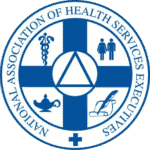Offering student loan assistance to your FQHC doctor is a key benefit of their service to your organization. While there are many other benefits to working at an FQHC such as better work/life balance, it is loan forgiveness that consistently attracts new doctors to community healthcare.
Loan repayment came about because of the need for qualified clinicians to work in rural and underserved communities as well as the rising costs of healthcare tuition for medical professionals.
Currently, there are three avenues that can help clinicians repay their tuition. This article will help your organization understand the kind of “pecking order” for tuition reimbursement, including federal, state, and FQHC options.
Reimbursement Option #1: National Health Service Corps.
The National Health Service Corps operates in two manners. First, they award scholarships to promising medical students to help them receive training and credentialing. Second, they pay student loans for current primary healthcare workers.
For student loan repayment, the healthcare professional must work at an NHSC-approved location (this is usually an FQHC) and must be licensed to practice in primary care, dental, or mental health/behavioral health. If the clinician meets the requirements and receives tuition forgiveness, it should be noted this repayment is tax-free.
Reimbursement Option #2: HRSA Bureau of Health Workforce SLRP
The Health Resources and Services Administration (HRSA) Bureau of Health Workforce administers a State Loan Repayment Program (SLRP), which gives states grants to distribute to medical professionals for loan repayment. Like the federal program, the SLRP covers primary care, dental, and mental/behavioral licensed practitioners. But there are differences between states; Advance Practice Clinicians, Registered Nurses, and Registered Pharmacists, may also qualify. However, these rewards are still tax-free.
Currently, all 50-states plus American territories offer this program. There are rules that apply, including the maximum amount of award that the recipient can receive.
There are also rules that govern the amount of payment from federal versus state programs. Clinicians can never receive more than their outstanding debt, and the maximum award for a two-years FQHC service is $50,000, which is $25,000 from the feds and $25,000 from the state.
Reimbursement Option #2: FQHC’s Employment Contract
Finally, in the unusual event that the federal or state government loan repayment programs don’t work, the FQHC may offer an employment contract that repays the clinician’s student loan. However, when loan forgiveness is offered directly by the employer to the clinician, it is considered table income. Typically, we also see contracts specifying that the doctor repays the loan value to the FQHC if they end up leaving their job before a term specified in their contract.
How Can My FQHC Qualify to Offer Tuition Repayment
Most FQHCs meet the criteria for these programs by virtual of already meeting the stringent requirements necessary to receive the FQHC designation. They are located in a Health Professional Shortage Area (HPSA) and provide culturally competent, comprehensive primary care services. They also offer a sliding scale or free services, depending on the patient’s ability to pay. FQHCs that have not applied to become an NHSC site should click here to find out more about how to qualify.
UHC Solutions is proud to partner with FQHCs to provide them with top healthcare talent to ensure their mission to serve is achieved.





